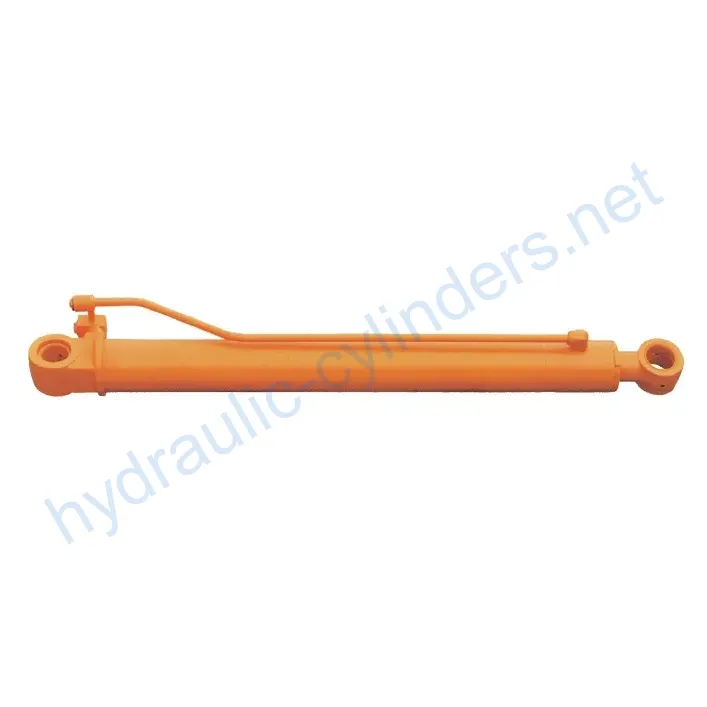Arm Cylinder For Doosan Middle Excavator DH258-5-7
Arm Cylinder is a specifically designed hydraulic cylinder that provides linear motion and power to the arm of various machinery, such as excavators, cranes, and mechanical arms. It plays a crucial role in hydraulic systems, enabling the effective movement and control of additional tools or attachments. These cylinders not only ensure smooth motion but also withstand heavy loads, ensuring efficient operation and reliability of the machinery under various working conditions.
Features
- High-Efficiency Transmission: The arm cylinder provides powerful linear motion and force, ensuring high-performance efficiency during various operations.
- Precise Control: Through the hydraulic system, the arm cylinder enables precise motion control, making the operation of attached tools more flexible and accurate.
- Durability: Arm cylinders are typically made of high-strength materials, offering excellent wear resistance and corrosion resistance, making them suitable for long-term use in harsh environments.
- Multi-functional Adaptability: These cylinders can be widely applied to various machinery equipment, such as excavators, cranes, and mechanical arms, catering to different operational needs.
- Easy Maintenance: Designed for easy maintenance and replacement, arm cylinders facilitate convenient regular inspections and maintenance, minimizing equipment downtime.
Applications
- Construction Engineering: In excavators and cranes, arm cylinders control the motion of buckets or booms for earthmoving, material handling, and structural installation.
- Manufacturing Industry: In automated production lines, arm cylinders facilitate the movement of mechanical arms for assembly, welding, and handling processes, enhancing production efficiency and precision.
- Agricultural Machinery: In agricultural equipment such as harvesters and seeders, arm cylinders control the motion of operating arms for tasks like seeding, fertilizing, and harvesting.
- Mining: In mining equipment, arm cylinders are used to control the arm movement of mining machinery for ore extraction and transportation.
- Logistics and Transportation: In forklifts and handling robots, arm cylinders control the lifting and movement of forks, enabling material handling and stacking.
Design Considerations and Selection Criteria
- Load-Bearing Capacity: The arm cylinder’s ability to withstand specific loads is a crucial design consideration.
- Sealing: Various sealing elements, such as piston seals and rod seals, made of wear-resistant materials like polyurethane and nitrile rubber, ensure effective sealing.
- Durability: The cylinder body and threaded end surfaces undergo meticulous treatment to enhance wear resistance.
- Safety: Design considerations include safety features to prevent accidents during operation.
- Maintainability: Arm cylinders are designed for easy maintenance and should be regularly lubricated with appropriate hydraulic oil.
Sealing and Lubrication
Arm cylinders use various sealing components, such as piston seals and rod seals, made of wear-resistant materials like polyurethane and nitrile rubber. The cylinder body and threaded end surfaces are finely treated to enhance wear resistance. Regular lubrication with suitable hydraulic oil is necessary to ensure smooth operation.
Regular Inspection and Preventive Maintenance
- Regularly inspect the arm cylinder for any signs of leakage, wear, or damage.
- Check and clean the cylinder’s external surfaces and ensure proper lubrication.
- Monitor and maintain the hydraulic system to prevent contamination and ensure optimal performance.
- Follow the manufacturer’s guidelines for maintenance intervals and procedures.
Product Installation Guide
1. Prepare the necessary tools and equipment for installation.
2. Ensure the hydraulic system is depressurized before starting the installation.
3. Attach the arm cylinder to the designated mounting points, following the equipment’s specifications and guidelines.
4. Securely tighten all connections and fasteners.
5. Check for proper alignment and clearance.
6. Test the arm cylinder’s operation to ensure smooth movement and functionality.
Safety Considerations and Environmental Factors
When using Arm Cylinders, implementing safety measures is crucial to prevent accidents and ensure operator protection. Adhering to safety guidelines and regulations helps create a safe working environment.
Fault Diagnosis and Common Issues
1. Leakage: Check for any signs of hydraulic fluid leakage and inspect the seals for damage or wear.
2. Slow or Inconsistent Movement: Inspect the hydraulic system for any blockages or insufficient pressure.
3. Excessive Vibrations: Check for loose connections, damaged components, or misalignment.
4. Overheating: Inspect the cooling system and ensure proper fluid levels.
5. Abnormal Noises: Identify the source of the noise and inspect the relevant components for damage or wear.
For troubleshooting and resolving these issues, consult the manufacturer’s documentation or seek professional assistance. Implementing preventive measures can help minimize potential problems.
Remember to organize the article logically, use subheadings for easy navigation, incorporate relevant images or charts to enhance understanding, and ensure the content is clear, concise, and suitable for readers with different levels of technical knowledge.
Author: lyl

